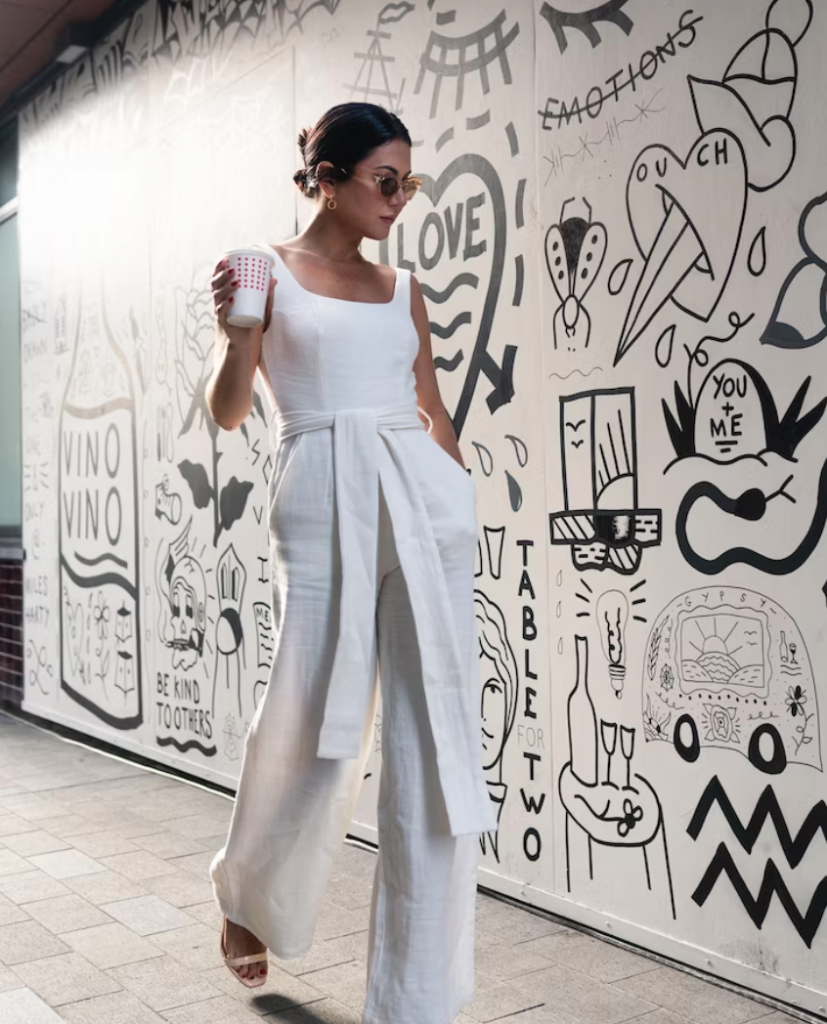Fashion, a perpetual kaleidoscope of style, constantly evolves, leaving behind a trail of trends that define eras. In this article, we embark on a journey through the ever-changing fashion landscape, exploring the historical roots, modern influences, challenges faced, and strategies adopted by the industry. As we chase chic, we delve into the intricacies of an industry marked by its dynamism, dissecting the impact of fast fashion, social media, sustainability, technology, and cultural diversity.
1. Introduction
The world of fashion is a dynamic tapestry, woven with threads of creativity, culture, and commerce. From the elaborate garments of ancient civilizations to the avant-garde designs of today, fashion remains a mirror reflecting the spirit of its time. As we embark on this journey through the fashion landscape, it’s essential to understand the concept of “chasing chic” – the relentless pursuit of style in a world where trends are ever-shifting.
2. Historical Evolution of Fashion Trends
To comprehend the present, we must first trace the footsteps of the past. The evolution of fashion trends is a captivating narrative, deeply intertwined with historical, cultural, and societal changes. From the opulence of the Renaissance to the rebellion of the Roaring Twenties, each era has left an indelible mark on the way we dress and express ourselves.

3. The Rise of Fast Fashion
In the contemporary era, the fashion landscape has been reshaped by the rise of fast fashion. The lightning-fast production cycles, fueled by consumer demand for the latest trends at affordable prices, have transformed the industry. However, this meteoric rise comes at a cost, with environmental concerns and ethical considerations challenging the sustainability of the fast fashion model.
4. Influence of Social Media on Fashion Trends
The advent of social media platforms has democratized fashion, allowing trends to emerge from the grassroots. Instagram, TikTok, and Pinterest have become virtual runways, where influencers and ordinary individuals alike showcase their unique styles. This democratization has not only broadened the definition of beauty but has also given rise to a more inclusive and diverse fashion landscape.
5. Fashion Weeks and Influencer Culture
Fashion weeks, once exclusive events for industry insiders, now reach a global audience through live streams and social media coverage. Simultaneously, influencers have become powerful trendsetters, shaping consumer preferences and challenging traditional notions of style. The synergy between fashion weeks and influencer culture has redefined the way trends are disseminated and adopted.
6. Sustainability in Fashion
Amidst the glitz and glamour, the fashion industry is increasingly confronting its environmental footprint. The call for sustainability has led to a paradigm shift, with brands adopting eco-friendly practices and consumers demanding transparency. This section explores how sustainability is reshaping the fashion landscape and fostering a more responsible industry.

7. Technological Advancements in Fashion
Technology has become an integral part of the fashion experience, from virtual try-ons using augmented reality to seamless online shopping experiences. E-commerce platforms and advanced technologies are not only changing how consumers interact with fashion but also revolutionizing the design and production processes. The future of fashion is undeniably intertwined with technological innovation.
8. Cultural Diversity in Fashion
The beauty of fashion lies in its ability to draw inspiration from diverse cultures. This section celebrates the richness of cultural influences in the fashion world, emphasizing the importance of representation and inclusivity. From traditional garments to contemporary fusion styles, the fashion landscape is a vibrant tapestry woven with threads from every corner of the globe.
9. Challenges Faced by the Fashion Industry
As the fashion industry hurtles through time, it faces numerous challenges, from addressing body image issues to promoting diversity and inclusivity. Navigating the complexities of a global market requires constant adaptation and a commitment to fostering positive change. This section unpacks the challenges that cast shadows on the glamorous façade of the fashion world.
10. Adaptation Strategies for Fashion Brands
In the face of rapid change, successful fashion brands exhibit agility and flexibility. This section analyzes case studies of brands that embraced change, exploring how adaptability has become a cornerstone of enduring success. From iconic fashion houses to emerging labels, the ability to navigate shifting trends is paramount in an industry where the only constant is change.
11. The Role of Fashion Critics and Analysts
In a world inundated with choices, fashion critics and analysts play a crucial role in guiding consumer preferences. This section delves into the significance of their opinions and the evolving landscape of fashion criticism. Additionally, the integration of data analysis in predicting and understanding trends showcases the marriage of tradition and technology in shaping the industry.
12. Consumer Empowerment in Fashion Choices
The modern consumer is empowered, armed with information and a voice that can shape the market. Brands are adapting to this shift, understanding the importance of meeting consumer demands for transparency, ethical practices, and inclusivity. This section explores how the empowered consumer is reshaping the dynamics of the fashion industry.
13. The Intersection of Fashion and Technology
As technology continues to advance, its impact on the fashion landscape becomes more profound. From artificial intelligence influencing design to wearable technology merging with style, this section examines the intersection of fashion and technology. The evolving relationship between these two realms is shaping a future where innovation and style coexist seamlessly.
14. Ephemeral Nature of Fashion Trends
Trends, by nature, are ephemeral, with some enduring while others fade away. This section explores the transient nature of fashion trends, emphasizing the delicate balance between timeless classics and fleeting fads. Understanding this dichotomy is essential for both consumers and industry players navigating the ever-evolving fashion landscape.
15. Conclusion
In conclusion, the journey through the ever-changing fashion landscape is a testament to the industry’s resilience and adaptability. As we chase chic, we find ourselves in a perpetual dance of creation, reinvention, and discovery. The only constant is change, and in the world of fashion, change is not just inevitable – it is the very essence that keeps the industry alive and thriving.
FAQs
- How do fashion trends influence cultural diversity?
Fashion trends serve as a canvas where diverse cultural influences are celebrated and showcased, promoting inclusivity and representation in the industry.
- What role do influencers play in shaping fashion preferences?
Influencers act as powerful trendsetters, leveraging their reach to redefine style norms and bridge the gap between fashion weeks and everyday consumers.
- How are fashion brands addressing environmental concerns?
Fashion brands are adopting sustainable practices, from eco-friendly materials to ethical production processes, in response to growing consumer demands for environmental responsibility.
- Why is the empowerment of consumers crucial in the fashion industry?
Empowered consumers drive change by demanding transparency, ethical practices, and inclusivity from fashion brands, shaping the industry’s trajectory.
- What is the future of fashion in the intersection of technology and design?
The future of fashion lies in the seamless integration of technology and design, from AI-driven innovations in design to the incorporation of wearable technology into everyday style.




